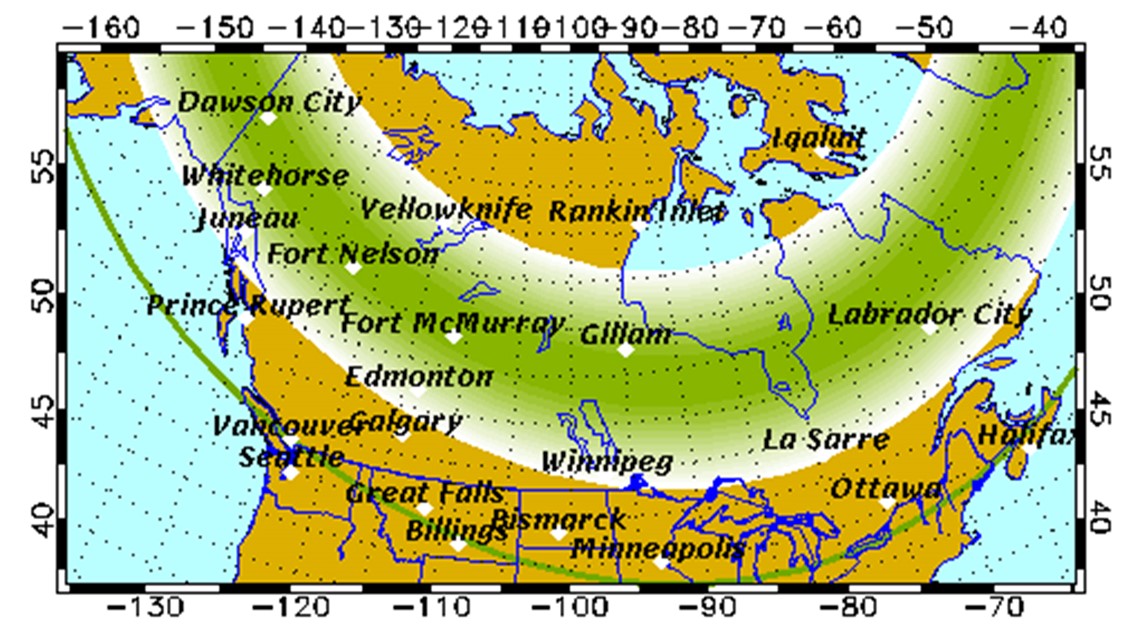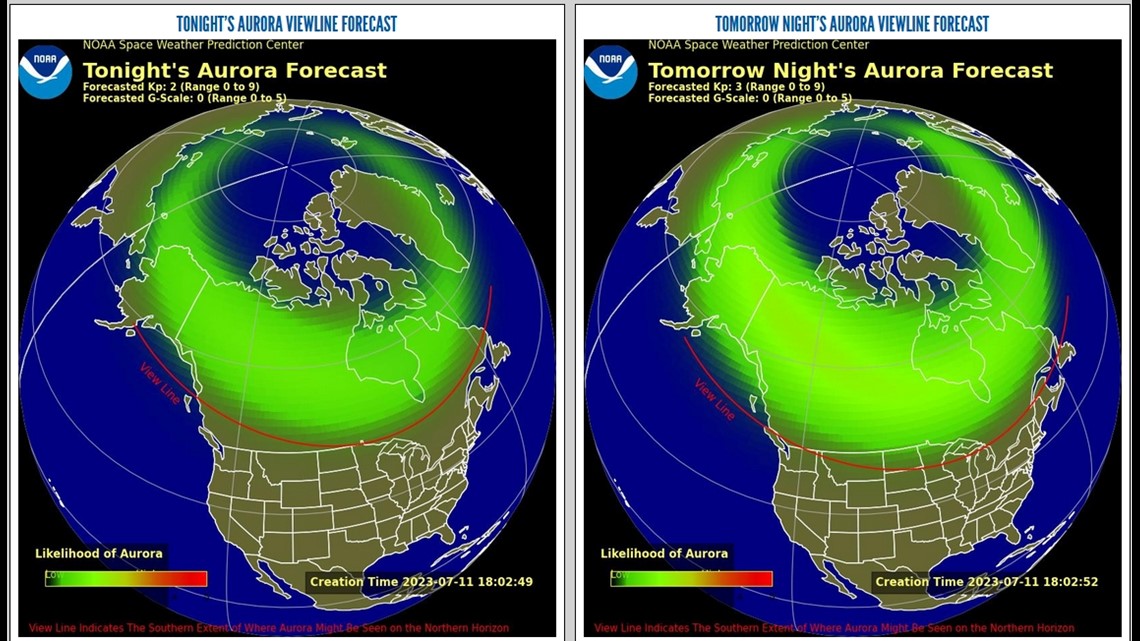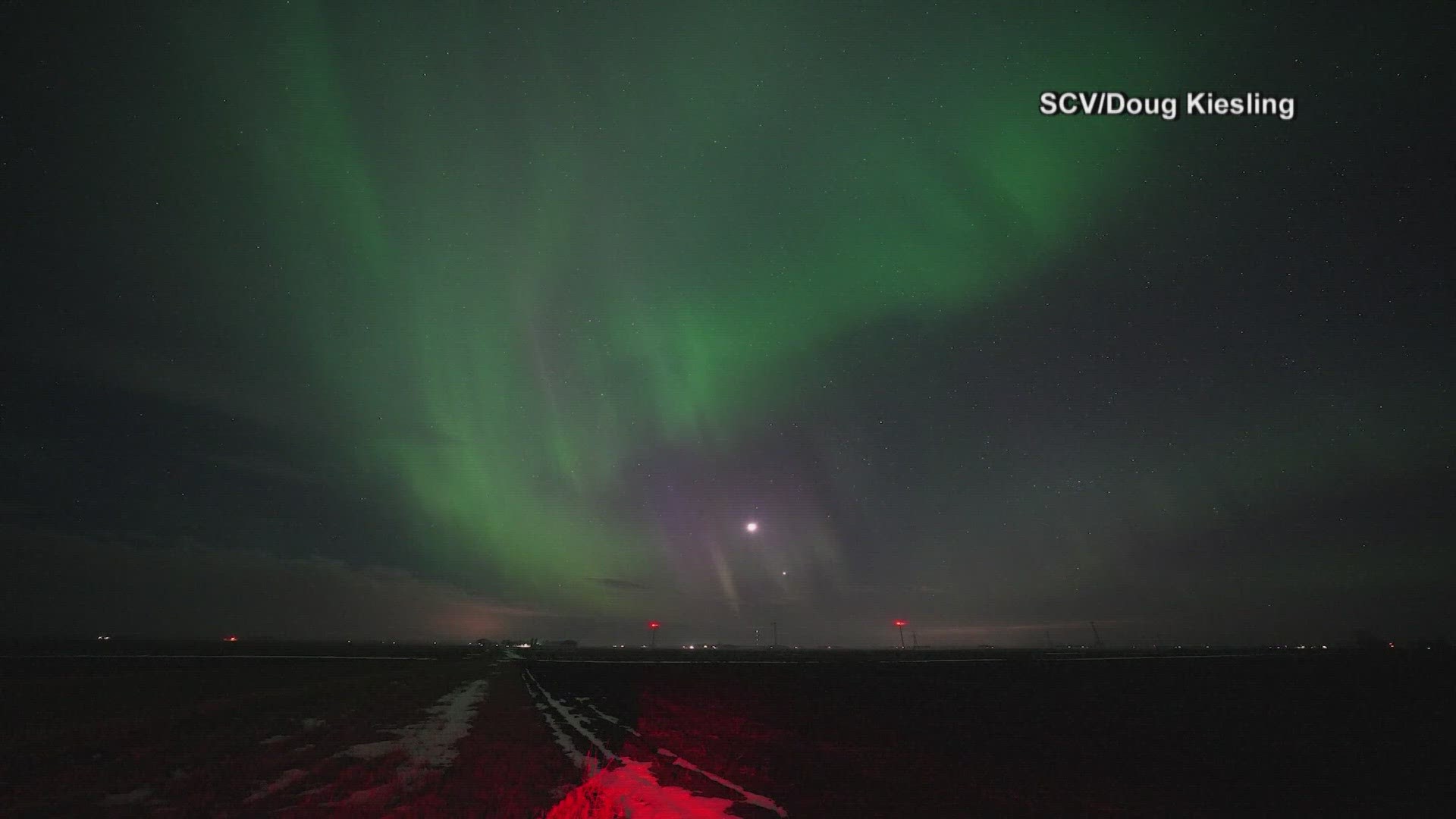SEATTLE — The Northern Lights will be visible in a number of states later this week, including the state of Washington, but an updated forecast shows fewer people can expect to see it than previously expected.
The aurora borealis is a glow in the sky produced when electrons from space flow down into Earth’s magnetic field and collide with atoms in the atmosphere in a ring centered on the magnetic pole of Earth, according to the National Oceanic and Atmospheric Administration’s (NOAA) Space Weather Prediction Center.
In the Northern Hemisphere, this is referred to as the Northern Lights.
There are a couple of factors that could impact your ability to see the aurora borealis: light pollution and cloud cover.
The forecast shows that the skies will be clear in Washington on Wednesday night into Thursday. In terms of light, the moon won't be too bright, only 17% full, but light pollution will still play a role for those in more heavily populated areas.
The best place to view the lights will be outside of the cities, whose light pollution can diminish the faint greenish glow of the aurora. If you have time late Wednesday night, get outside of the city and look at the northern horizon for the possibility to see the Northern Lights.
The aurora will be strongest in the northeast corner of the state, as you move away from that area the aurora borealis will be visible but much lower on the horizon, according to the University of Alaska Fairbanks (UAF) Geophysical Institute’s forecast. The farther north you are, the better the chance of seeing aurora.


The UAF has forecast auroral activity on Wednesday night into Thursday for the following states in the U.S.: Alaska, Washington, Idaho, Montana, North Dakota, Minnesota, Wisconsin, Michigan, and Maine. Auroral activity is also expected to be viewable across Canada, including Vancouver.
Light displays are expected to be overhead in Juneau, Alaska, Edmonton, Alberta and Winnipeg, Manitoba, and low on the horizon in places like Vancouver, B.C., Great Falls, Montana, and Lansing, Michigan, according to the UAF institute.
NOAA suggestions for best viewing:
Find a good location: the closer to the magnetic pole -- the farther north for the Northern Hemisphere -- the better. Try to find a place where you have a clear view to the north. Higher elevations can be better.
Find a dark place: try to move away from bright city lights. According to NOAA, “given the right vantage point, say for example on top of a hill in the Northern Hemisphere with an unobstructed view toward the north, a person can see aurora even when it is 1,000 km (600 miles) further north.”
Time the viewing well: the best viewing is as close to midnight as possible, so the 10 p.m. to 2 a.m. hours are ideal.
How the aurora borealis is measured: the Kp index
The aurora is measured using the Kp index, which is a scale of 0-9. NOAA’s tips on viewing the aurora share this scale for viewing:
For Kp in the range 0 to 2, the aurora will be far north, quite dim in intensity, and not very active.
For Kp in the range of 3 to 5, the aurora will move further from the poles. It will become brighter and there will be more auroral activity (motion and formations). If you are in the right place, these aurora can be quite pleasing to look at.
For Kp in the range 6 to 7, the aurora will move even further from the poles and will become quite bright and active. At this geomagnetic activity level, it might be possible to see the aurora from the northern edge of the United States.
For Kp in the range 8 to 9, the aurora will move even further towards the equator and it will become very bright and very active. These are the events that create the best aurora and the extended auroral oval will be observable by the most people. At these levels, aurora may be seen directly overhead from the northern states of the U.S.
This dashboard from the NOAA’s Space Weather Prediction Center details the forecast for the next two nights of viewing.
The night of Tuesday, July 11, NOAA reports an expected Kp of 2, with that viewing dropping down farther into Canada, but still not viewable for the United States.
NOAA’s Space Weather Prediction Center has dropped the Kp index for Wednesday, July 12 from a Kp index of 6 to a Kp index of 3-4, possibly viewable from the northern tier of states.
However, this will make it less likely we will see the Aurora from western Washington. There is a slight chance that the auroral activity might last into Thursday night in western Washington.



